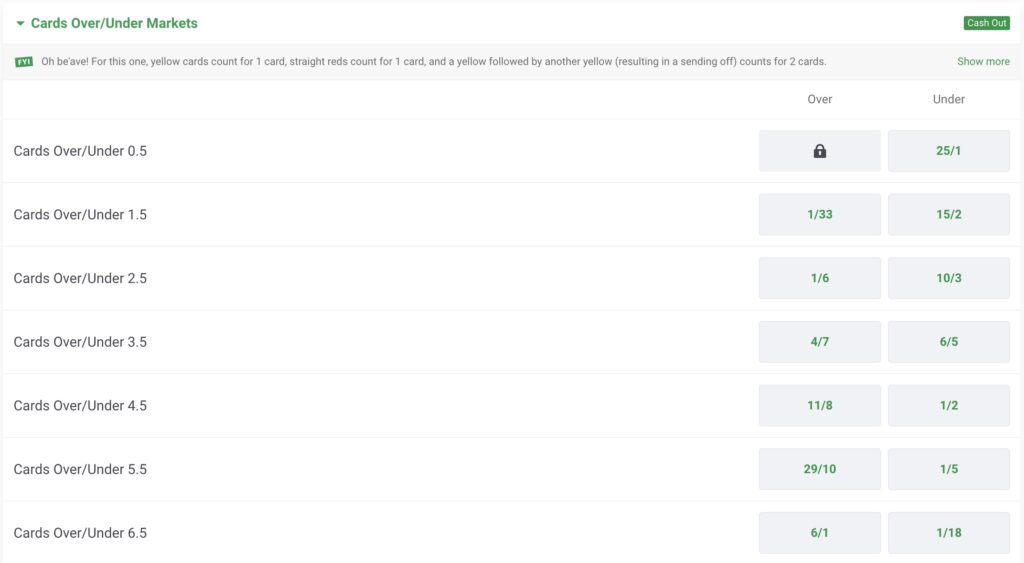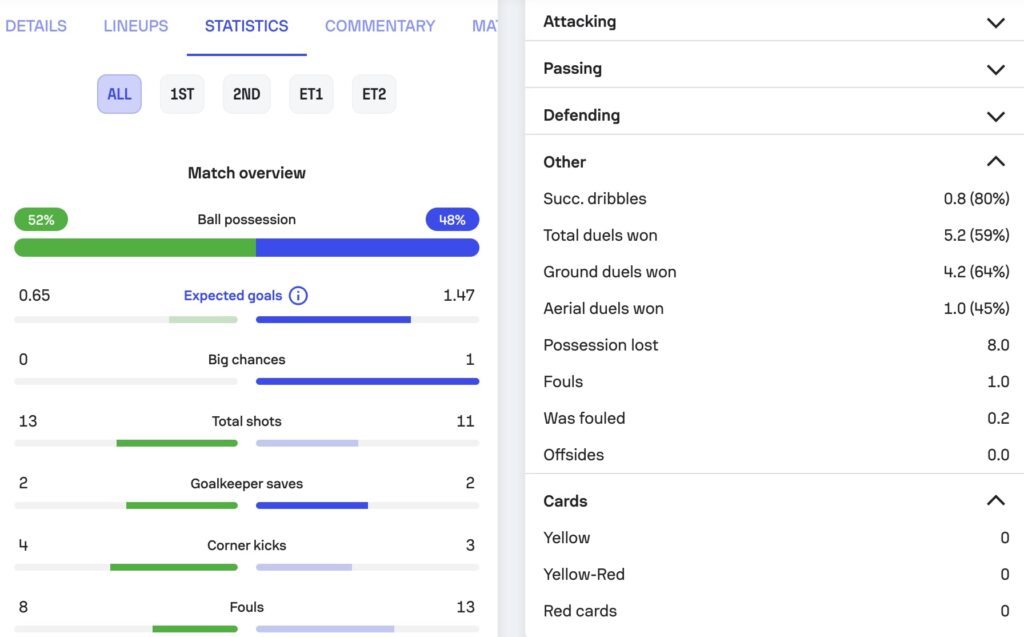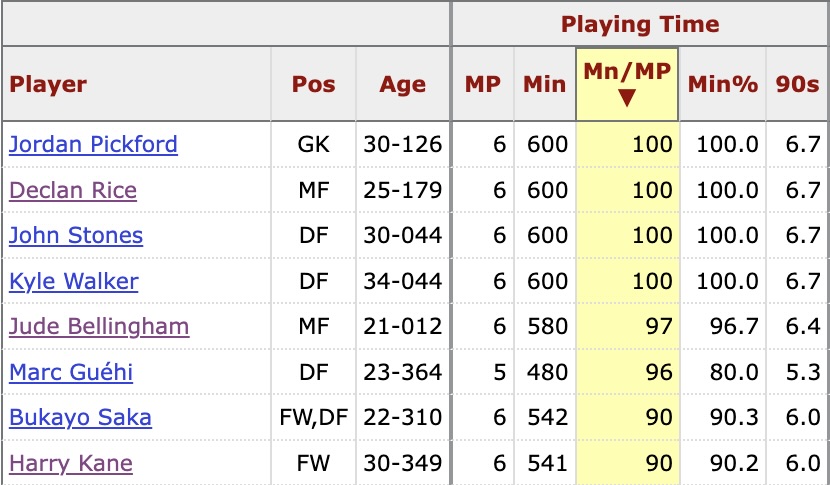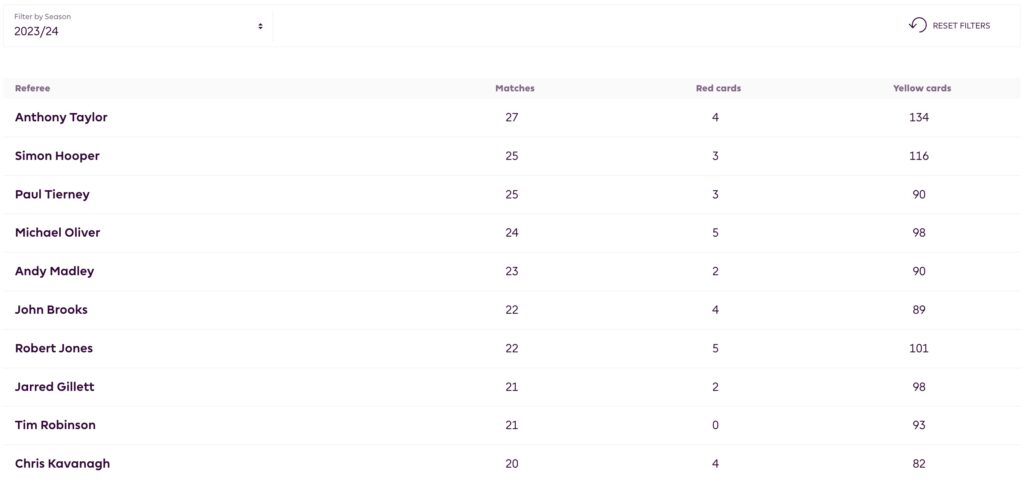In this article…
What is card betting?
Betting on cards is one of the most profitable and popular methods of football betting. Aside from more traditional markets such as match results and goals markets, betting on cards can be a fun and appealing method for a range of punters.
There are many different ways you can bet on cards, whether it be team cards or player cards, I will examine each market and demonstrate how I go about picking card bets below.
You can use Andy’s Bet Club to gain valuable insight into card data for each match via my Bet Builder stats tool on-site. For each game, you can study match stats called cheat sheets, which provide all the card stats you need.

Over/Under cards
One of the most common card markets to bet on is the Over/Under market, which is essentially whether there will be over or under X number of cards in a match – an example of how this is often presented is: Over 3.5 Total Cards (four or more).
The line is set by the bookmaker, but you can also pick alternative lines if you’re seeking bigger or smaller odds. Some bookmakers offer the opportunity to bet on exact cards, which is extremely difficult to predict, but can prove very valuable.

Team total cards
Another market available is the Team Total Cards market, which does what it says on the tin. It’s a market where you can bet on the total number of cards in the match for one of the two teams.
There are several factors to consider when placing a bet on the total team cards market, including team trends and referee stats, which will be examined and explained later on in this guide.

Cards match betting
You can also bet on which team you think will receive the most cards in the match. Underdogs are traditionally favourites in this market, given their potential desire to commit persistent fouls and be forced into a greater amount of defending.
This can mean there is often plenty of value in favourites to take this line and as shown below, odds for both teams to receive the same amount of cards can be valuable too.

Player card betting
What is player card betting?
Player card betting is one of the most popular football betting markets, you can place individual bets on a player to receive a yellow or red card or combine your selection with more in bet builders. Paddy Power’s excellent Super Sub feature is perfect for this market, as if your selection is substituted off, your bet rolls onto to the player replacing him, rather than losing.
Below, I will outline how I research and predict players to receive yellow cards and red cards, which can provide huge value.
If you are enjoying this cards guide, feel free to take advantage of my xG betting guide, guide to betting on corners, and football goals betting guide.
To make sure you’re putting all of these tips and tricks to good use, keep up to date with the very latest football predictions here on Andy’s Bet Club.
Player card betting as singles/multiples
Player card betting as singles or multiples can provide excellent value when punting, as shown below, you traditionally get excellent odds when exploring this market, this is due to the unpredictability of the selections and the fact that so many factors are in play, including tactics and referee discretion.

Player card betting as part of a bet builder
As I’m sure you know by now, one of my favourite ways to bet is by using bet builders, which can be perfect for player card betting.
By selecting players to be booked alongside picks can add even greater value onto bets and boost odds even more, creating opportunities to get a better return on your stake.

What to consider when betting on cards
Key stats to examine
I will now delve into the various factors and stat lines that I examine and take into account when placing bets on card markets.
For team card markets, it’s vital to examine a team’s trends and past card statistics. The way i do this is by utilising SofaScore, who have accurate accounts of both team and player foul and card stats.

By looking through a team’s recent matches, I can identify trends such as how many fouls a team tends to commit/draw, as well as how many cards they average both for and against. This is also true for players, as shown on the image above.
Opta have developed a reputation for accuracy and consistency and are my go-to place for stats to help with football betting, they power my bet builder football match stats, so you can be sure that all of the numbers are accurate.
Opta’s ‘Fouls Per Game’ data point is vital for card betting, as it allows me to identify which players commit the most fouls per game, and therefore are the most likely to receive a card.

Potential player game time
A vital point to analyse is how often your potential selection is substituted, as if a player tends not to play 90 minutes, it’s probably a good idea to avoid baking them to receive a card. You can calculate a player’s average minutes played using data on FBref, by analysing the Minutes Per Match Played filter. This gives a strong insight into how many your potential selection is likely to play for.

It is impossible to predict exactly how many minutes a player will play and it can be extremely frustrating seeing your selection replaced when on the brink of potentially receiving a card. However, Paddy Power’s brilliant ‘Super Sub’ feature ensures that if your player is substituted, your bet rolls on to the player who is coming on, rather than being deemed a losing bet like it would be with other bookmakers.
This excellent feature provides some added insurance and gives you even more reason to explore the player card market.
Direct opponents
Next, it’s important to identify potential direct opponents, this will help when trying to predict how many fouls your selection is likely to make – which will give you a strong idea of their chances of receiving a card.
Again, by utilising Opta’s tools, you can analyse the ‘Fouls Drawn’ stat for opposition players, which I’ve made easy to access via my Bet Builder Stats tool.
Referee statistics
To round off my research, I make sure to analyse referee statistics, as certain referees average more cards per game than others – which can make all the difference. I use the official Premier League website for this part of my research.
For example, in the 2023/24 Premier League season, Paul Tierney awarded 90 yellow cards in 25 matches, an average of 3.6 per match. Meanwhile, Robert Jones awarded 101 yellow cards in 22 matches, which is an average of 4.6. This shows that the latter is potentially more likely to award cards than the former, which is vital to note when thinking of betting on team cards or player cards.

Here at Andy’s Bet Club, my experts also regularly provide a Referee Watch, which keeps up to date with the latest trends and card tendencies for several referees.
Written by an Andy verified content writer
18+ please gamble responsibly.















